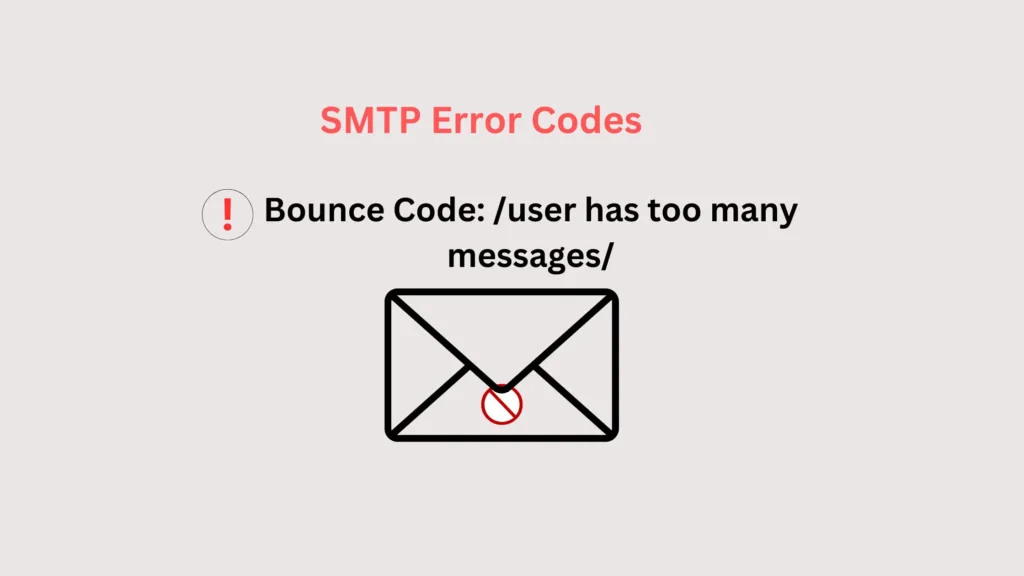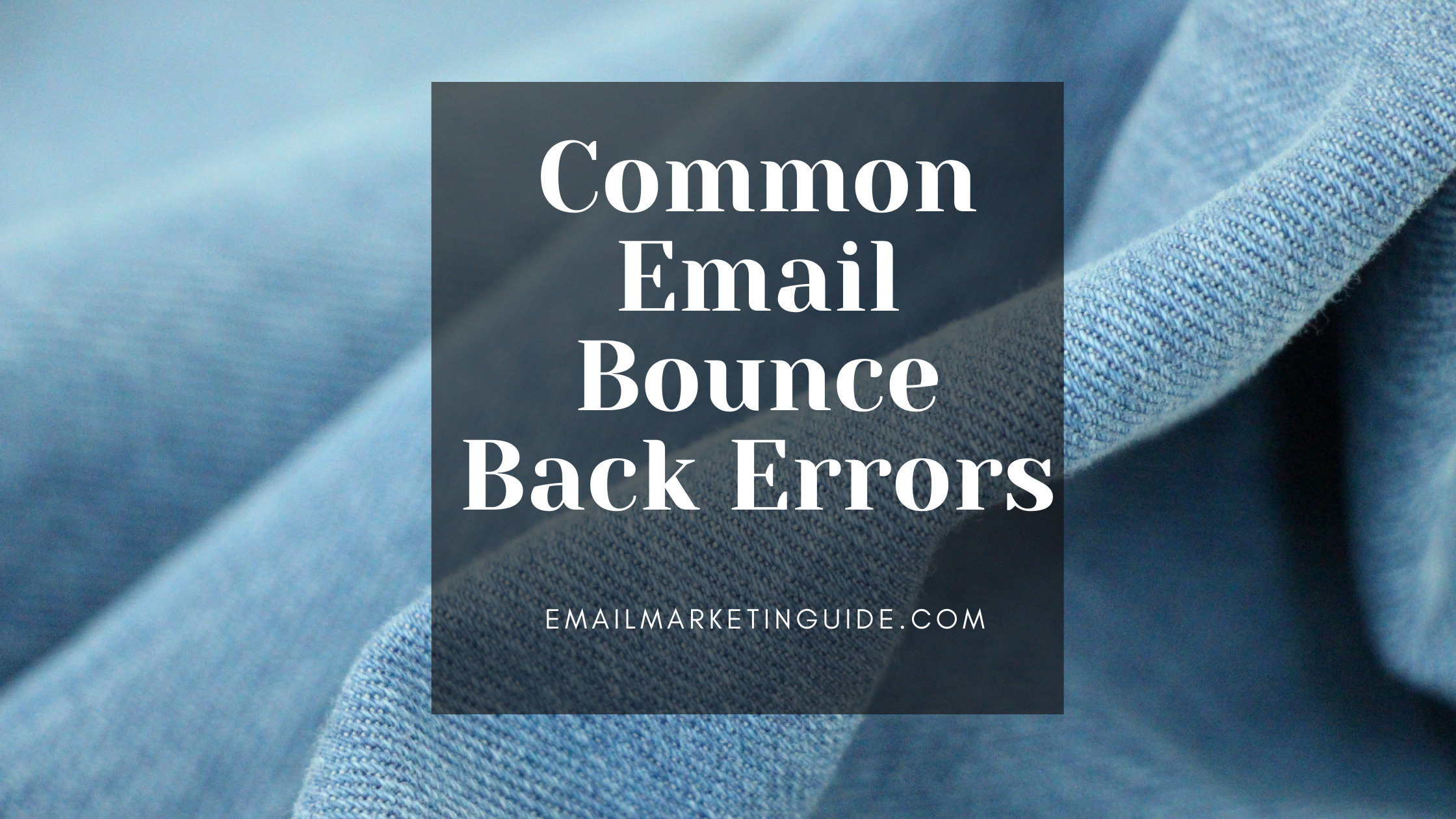Table of Contents
Email Bounce Codes – What It’s Mean
Email bounce codes are a crucial aspect of email marketing and communication that many people are unaware of. When you send an email and it doesn’t reach the intended recipient, the email server will often provide a bounce code that explains why the email was not delivered. These codes contain valuable information that can help you diagnose and fix email delivery issues. In this article, we’ll explain what email bounce codes are, what they mean, and how to handle them.
Introduction to Email Bounce Codes
When you send an email, the recipient’s email server will check to see if the email can be delivered. If there is an issue with the email, the email server will return a bounce message. This message will contain a code that indicates why the email was not delivered. It is important to understand these bounce codes so that you can fix any issues with your emails and ensure that they are delivered successfully.
Hard Bounce and Soft Bounce
Email bounce codes, Hard bounce and soft bounce – When an email campaign gets failed and does not reach the recipient’s inbox it means the email gets bounced. But what kind of bounce can be clarified by the received response whether it is a hard bounce or a soft bounce? So what are hard bounces and soft Bounces? Moving forward to make you understand what they are with examples.
Hard Bounce
Hard bounce refers to the emails that failed to send. A hard bounce is a permanent failure. When an email fails to send to the intended recipient due to any reason like the account being inactive, the recipient address being incorrect etc is considered a hard bounce.
Example of Hard Bounces
- Mailbox is no longer in use.
- User Not Exist.
- Bad address syntax.
Soft Bounce
The bounce that occurs due to some temporary reasons is considered a soft bounce. Soft bounces are resolvable. Using the proper approach you can resolve it. Soft bounces occur due to reasons like the user inbox having no space, Configuration issues domain is not authenticated etc.
Examples of Soft Bounces
- Server configuration problem.
- User quota exceeded.
- Temporary problem verifying address.
Email Error Codes
When you send an email campaign and get failed then you may receive bounce code responses with some error code, that response indicated whether it is a hard-to-bounce or soft bounce. Based on that you may be able to resolve it. Below are some common email bounce-back codes with their bounced type.

SMTP Bounce Codes
| SMTP Error Code | Email Bounce codes list | Email Bounce type |
|---|---|---|
| 429 | /user has too many messages/ | Soft Bounce |
| mailbox is no longer in use | Hard Bounce | |
| exhausted allowed storage space | Soft Bounce | |
| 421 | 5.7.1 Connection refused | Soft Bounce |
| 421 | Service not available | Soft Bounce |
| 450 | 4.7.1 <xxx@xxx.com>: Recipient address rejected: this address is over the storage limit | Soft Bounce |
| 451 | 4.3.2 Please try again later | Soft Bounce |
| 451 | 4.3.5 Server configuration problem | Soft Bounce |
| 451 | Temporary problem verifying address. | Soft Bounce |
| 452 | / try later/ | Soft Bounce |
| 452 | 4.3.1 Insufficient system storage | Soft Bounce |
| 501 | Bad address syntax. | Hard Bounce |
| 550 | Relay is not permitted. | Hard / Soft Bounce |
| 550 | Permanent Failure: banned | Hard Bounce |
| 550 | The account is not active | Hard Bounce |
| 550 | Mail to xxx@xxx.com has been suspended. | Hard bounce |
| 550 | User Not Exist | Hard Bounce |
| 550 | Recipient Rejected: Mailbox would exceed the maximum allowed storage | Soft Bounce |
| 550 | permanent failure for one or more recipients | Soft Bounce |
| 550 | Mail is rejected by recipients | Soft Bounce |
| 552 | 5.2.2 User quota exceeded | Soft Bounce |
| 554 | Message not allowed – [PH01] Email not accepted for policy reasons. | Soft Bounce |
| 554 | no valid recipients | Hard / Soft |
Email Service Providers
When you send an email to the recipient using any service provider and the email gets bounced then sometimes the bounce error belongs to the respective email provider. For example – there might be a case that emails are bouncing while sent to yahoo users, so in that case, you have to reach the yahoo email service provider. In this way there are many service providers few I am mentioning below –
| Amazon simple email service | Comcast | Hostpoint |
| Apple | Godaddy | Mail.ru |
| AT & T | Outlook | |
| Orange | ProtonMail | |
| Yahoo Inc | Yandex | Zoho |
Spam Filters
Spam filters help in reducing spamming. If they found anything not legitimate then they blacklisted your Ip or domain. And if you think that you haven’t sent anything that is against anti-spam law then you can reach them via mail or the process they mention on their website. Below is the list of spam filters –
| Barracuda | Mimecast | ZeroSpam |
| Cisco | Proofpoint | Truncate |
| FireEye | TrendMicro | Spamhaus |
Helpful Websites for Email Bounce Codes
- Smtp error with the possible solutions doesn’t forget to visit this website.
- Code 1xx, 2xx, 3xx, 4xx, 5xx explained. Visit this blog
- Here codes and their explanation are present for each and every email service provider. For more detail visit this blog.
- Yandex SMTP errors and their explanation
- Proofpoint error codes
- Blog from Microsoft explaining error codes 550, 553 and relay-prohibited issues. Check this blog
- Receiving bounce messages from yahoo, understand what that email bounce code means. Check this Yahoo blog post.
- Get detailed each error code along with the explanation. Go here.
Conclusion
In conclusion, email bounce codes are an essential part of email communication that is often overlooked. Understanding these codes can help you diagnose and fix email delivery issues, ensuring that your emails are delivered successfully. Soft bounces typically indicate a temporary issue with email delivery and can often be resolved by waiting and trying again. Hard bounces are permanent and indicate that the email address is invalid or no longer in use. It is essential to remove hard bounces from your mailing list to maintain a high deliverability rate.
You may also like
Email marketing step-by-step guide for beginners
What is snowshoe spamming?
Hard bounces and soft bounces
Email deliverability best practices
Email marketing tips and tricks
